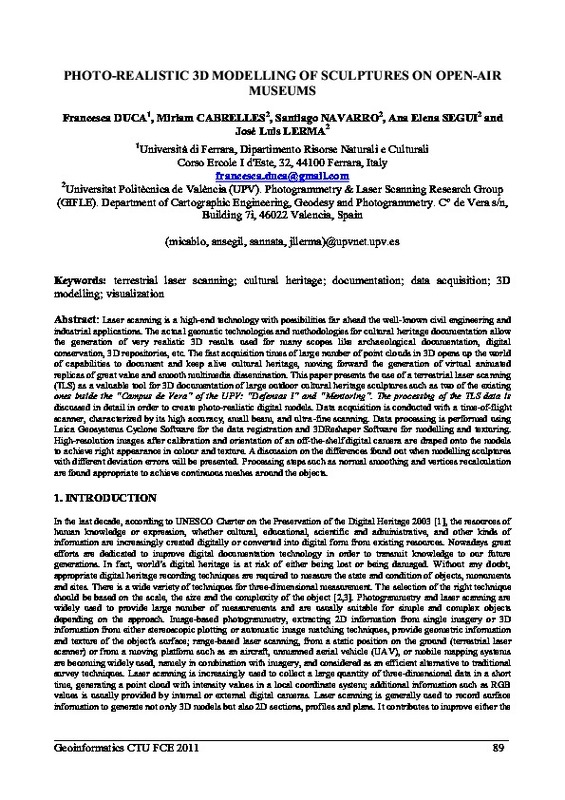JavaScript is disabled for your browser. Some features of this site may not work without it.
Buscar en RiuNet
Listar
Mi cuenta
Estadísticas
Ayuda RiuNet
Admin. UPV
Photo-realistic 3D modelling of sculptures on open-air museums
Mostrar el registro completo del ítem
Duca, F.; Cabrelles López, M.; Navarro Tarin, S.; Seguí Gil, AE.; Lerma García, JL. (2011). Photo-realistic 3D modelling of sculptures on open-air museums. Geoinformatics FCE CTU. 6:89-96. https://doi.org/10.14311/gi.6.12
Por favor, use este identificador para citar o enlazar este ítem: http://hdl.handle.net/10251/57409
Ficheros en el ítem
Metadatos del ítem
| Título: | Photo-realistic 3D modelling of sculptures on open-air museums | |
| Autor: | Duca, Francesca Cabrelles López, Miriam Navarro Tarin, Santiago Seguí Gil, Ana Elena | |
| Entidad UPV: |
|
|
| Fecha difusión: |
|
|
| Resumen: |
[EN] Laser scanning is a high-end technology with possibilities far ahead the well-known civil engineering and industrial applications. The actual geomatic technologies and methodologies for cultural heritage documentation ...[+]
|
|
| Palabras clave: |
|
|
| Derechos de uso: | Reconocimiento (by) | |
| Fuente: |
|
|
| DOI: |
|
|
| Editorial: |
|
|
| Versión del editor: | http://dx.doi.org/10.14311/gi.6.12 | |
| Código del Proyecto: |
|
|
| Agradecimientos: |
|
|
| Tipo: |
|









